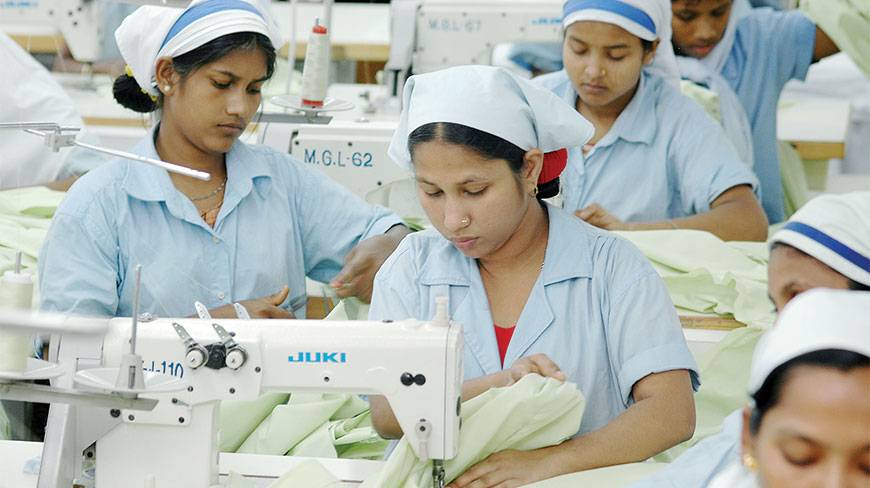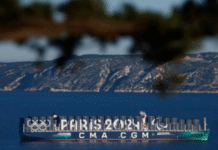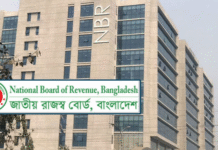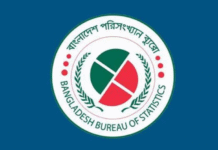With most of the news from Bangladesh that reaches the international news cycle focusing on a host of negative issues, this interview with Mr Quadir takes a look at the underlying growth in the economy of Bangladesh and the prospects for investment there.
When news from Bangladesh reaches the international media, it usually is not good. The common terms are political unrest, factory protest, cyclones, tornadoes, floods or Islamist plus a negative adjective. Setting aside the recent elections, what are the positive things happening for the economy of Bangladesh’s 160 million people that those outside the country should know about?
The interesting story which most people in the international investment community may not know, is that, over the last 20 years, Bangladesh’s economy has been growing 5 to 6% per year. We never grow 20%. We never have zero growth. This is the predictable and consistent growth that all investors want. Part of the business of investing in Bangladesh is this predictable growth that the country has shown over the last 20 plus years.
Where is this growth coming from? First is our export growth. There is a case for labor arbitrage. Bangladesh is a populous country where labor is less costly than elsewhere. Exports grew approximately 15% every year for the last several years. Even despite some political turmoil, exports grew around 17% in 2013.
Second, as a land mass, we are a very small country, as small as Wisconsin, one of the smaller states of the US However, our land is extremely fertile with a full six seasons of crop growing, which allows us to feed our whole population of 160 million people, more than 50% of the US population.
Third is our huge remittance flow from other countries. It was about $15 billion in 2013. Bangladeshis work in the Middle East, Far East, Europe, the United States. Wherever there are opportunities for labor, Bangladeshis are penetrating that market.
Lastly, the management of the macro economy by the government, irrespective of political parties, has been sound. Though small, we do have a balance of payments surplus; a reasonable size of foreign exchange reserves that will cover 6 months of imports; and our local currency, the Taka, has been reasonably stable.
Amidst this textbook growth, the remittances and the stable management of the economy, there is a growing middle class amongst our 160 million people that is the ultimate engine of our economy. This is the story we understand. This is why we took the pre-emptive approach of coming to Bangladesh and investing here.
I think more will follow suit. I think international investors and the international media are beginning to understand and see Bangladesh in a different light than in the 1970s and 1980s.
Bangladesh has been a model country for inclusive growth as measured by social indicators. We have done very well to reduce our mortality rate and reduce child labor while improving longevity, general access to education, women’s education and women’s empowerment. If you look at the United Nations Millennium Development Goals, Bangladesh has actually been at the forefront; and is heading towards becoming a middle-income country within the next decade.
In Bangladesh, the poor have been disproportionately elevated as compared to its growth. The Economist even noted this [as the magazine wrote in 2012 “over the past 20 years, Bangladesh has made some of the biggest gains in the basic condition of people’s lives ever seen anywhere”].
When we launched our fund in 2008, GDP per capita was about $650 in today’s dollars. In 2013 it was $1050. Within 5 years it grew by 62%. That’s very impressive growth!
Regarding the macroeconomic economy being stable regardless of which party is in power, is this because of the Central Bank of Bangladesh or why is this so?
The Central Bank is independent of politics and has managed monetary policy well regardless of which party is in power. The real drivers of our economy are the private entrepreneurs. Today exports are around $29 billion and 80% of those exports are from the garment industry. Garment factories started by entrepreneurs dominate the whole sector.
The economy is driven by the initiatives of private enterprise. Individuals drive both the export rate and the remittances from abroad. I think that the laborers who go abroad to unknown places to work do exhibit an entrepreneurial spirit.
Many of the large garment manufacturers of today were started by first time entrepreneurs without much prior business experience, yet they built extremely successful ventures. While the economy is being driven by the private sector, without the government’s strong complementary efforts, growth could not have occurred.
Regarding Bangladesh’s politics, the year began a few weeks ago with the re-election of Prime Minister Sheikh Hasina and her Awami League party. She was prime minister from 1996 to 2001 and has held the post again since 2009. There have been well-publicized issues with the opposition Bangladesh National Party, Jamaat-e-Islami, a partial boycotting of the recent election and the opposition leader Khaleda Zia herself formerly prime minister from 1991 to 1996 and 2001 to 2006 – under house arrest. Investors like stability. What is the outlook for a stable environment for investors in Bangladesh?
At the end of the day, Bangladesh is a democracy. It has its ups and downs. We are going through a growing phase or process towards a more hospitable and mature system of democracy. Bangladesh is the second largest Muslim country with a vibrant democracy.
Our democracy is not perfect, but nevertheless, it is a democracy. We are not ruled by some artificially implanted force, but by an electoral process. For anyone looking for stable, predictable and consistent growth, I do think, we offer a fantastic destination, despite the problems we have.
As discussed in recent interviews I did with people in Vietnam and Myanmar, there is a lot of talk in the frontier market community about low-end factory work rotating away from China to markets with cheaper labor. Is Bangladesh seeing job growth and what are Bangladesh’s competitive advantages?
We have a large pool of workers. 70% of the population is in the workforce. Only 11% of the workforce is currently in the industrial sector, so there are a vast number of people remaining that can be employed in the industrial sector.
Of course, both low cost labor and the availability of labor are important. Compared to other countries where labor is not that expensive, but the availability of labor is in question, Bangladesh offers a better situation with a larger skilled low-cost labor pool.
Another important thing is that Bangladesh is a very homogenous society. The business language here is English, so there is no language barrier. Any high school educated person from Bangladesh can communicate in English. We also have the strategic advantage of being near many of the largest countries and important commercial hubs in Asia like India, China, Singapore, Bangkok, Hong Kong and Kuala Lumpur.
There is a growing middle class, and the consumption power of the Bangladeshi people has been increasing steadily. This increases the stability of the domestic economy.
If I look at our own portfolio, we have an investment in a garments company that is doing very well. We have also invested in: a supermarket chain, a home appliance distribution and manufacturing company, a generic pharmaceutical producer, a motorcycle manufacturer. Except the one garment investment, the rest of the investments are focused on Bangladesh’s domestic economy.
The vibrant consumer base has its own force. We are not solely dependent on our cheap labor and exports. The growing middle class is an important part of our economy today. That’s why we see that Bangladesh has possibilities for investors with both a cheap labor base and a growing consumer base.
The Rana Plaza factory collapse in 2013 left 1,129 dead and about 2,500 people injured. The collapse and subsequent protests made headlines. What has been the reaction by the government and heads of industry to this incident?
Work safety is an important issue. I’m not saying all the factories in Bangladesh today are compliant with government and industry standards, but most are. The crisis created by this collapse was a reflection of a problem in this sector. It casts a light on the responsibility of the buyers, of the factory owners and of the regulators.
Given the importance of the garments sector in Bangladesh, with 5 million people working in it, I think there has been a broad understanding that the situation must improve. The factory owners have realized that they have a problem. The government has realized that they have to be a bigger watchdog. The big buyers have realized, whether it is GAP, H&M or others, that they have to ensure they enforce compliance.
I think all of them understand the problem and since this crisis, steps have been taken to improve the situation. The problem did not start in one night and will not go away in one night. It will take some time, but what is important is that this crisis did trigger awareness about the problem, and I think it is now being addressed.
Bangladesh is best known for exporting textiles. However there is a range of products exported from batteries to ballpoint pens. What export sectors are growing the fastest for Bangladesh?
One of the important sectors Bangladesh can grow is low-tech manufacturing. If I look at our own portfolio, we have invested in a company that manufactures refrigerators and assembles televisions.
We have invested in another company that exports automotive batteries in many countries. There is a generic pharmaceutical maker in our portfolio. Bangladesh has done quite well with pharmaceutical production.
We export pharmaceuticals to both very regulated markets, as well as unregulated markets, and this is a growing sector. We also have invested in a motorcycle company. If I look at our neighboring countries, the motorcycle usage is high compared to Bangladesh.
So in Bangladesh, as the spending power of the middle class increases there is the opportunity that more and more people will be using motorcycles as it is a first step before buying a car.
These are all industrial products though not the high tech type, like making the iPhone. I think Bangladesh has the chance to become a mini-China when it comes to manufacturing industrial, low-tech and household products, as well as garments and textiles. I see these as the current growing trends among entrepreneurs in Bangladesh.
Since peaking in November 2010, the Dhaka Stock Exchange index is down about 50%. What have been the causes of this drop in the stock market in the underlying economy and are the capital markets on the mend?
In Bangladesh, the stock market is driven by retail investors, mom and pop type investors. We do not have large institutional investors to guide the market. The market went up and down based on the rumors of retail investors. There were some imperfections in the system and in the regulations when we had a ballooning of the market through 2010.
Since then, the government cracked down quite hard and the regulators became more involved. More interestingly, there was a law enacted in 2013 to make the Dhaka Stock Exchange a demutualized stock exchange. The Dhaka Stock Exchange now is a company instead of a clubhouse of brokers.
This demutualization was essential to have a transparent, healthy and vibrant stock market. The Dhaka Stock Exchange is now in conversations with global technology providers to install a modern trading platform. When this takes place, it could become a good year for Bangladesh’s capital markets.
You had about $90 million to work with in 2009. What is the status of your private equity fund?
We are very close to deploying all our money from our first fund, and we are working to launch a second fund in 2014. We have not had any exits yet. We are in the business of investing in the right people, and the right opportunities with excellent growth stories. Our portfolio companies are doing quite well. The limited partners in our current fund have shown their willingness to come back and invest in our next Bangladesh fund.
Patrik Brummer, founder of Brummer & Partners said in 2009, “If you believe in labor arbitrage as a true trend, that will benefit Bangladesh.” Were there other mediating circumstances in Brummer & Partners decision to open their first single country Asian fund in Bangladesh?
I was introduced to Patrik Brummer in 2005 through a mutual friend after which he became involved in a personal capacity in the bracNet venture and came to Bangladesh to see the country. Brummer & Partners likes to be the first mover. They were the first hedge fund in Sweden; now one of the top ten in Europe with $16 billion under management.
Patrik Brummer is someone who has a vision and can take a bold step before others. When he came to Bangladesh in 2005, he really liked what he saw. Of course, Bangladesh is a poor country, no one can deny that. What Patrik saw are the opportunities, that almost every sector is growing, a vibrant local economy, increasing exports and the entrepreneurial and resilient spirit of the people.
To start a private equity fund, you cannot just start from nowhere. It is a very relationship based business, especially in a country where there is no tradition of private equity. Private equity requires local knowledge and the perseverance to work with companies.
It is not about just deploying some money. We are very involved in each of the companies. We take a minority stake, we don’t run any of the companies, but we are very involved in the business. We play a role at the strategic level through active board participation.
Lastly, in the past you have suggested there is the opportunity for Bangladesh to grow into a mini-China if infrastructure and power supply issues can be resolved. How far along is this progress and what positive developments do you see on the horizon?
There are ongoing projects in the power sector, as well as for highways, bridges, roads, ports and railways. The country needs a lot of new infrastructure and many such projects have been planned. Power has been a problem for us for many years.
Over the last 5 years, our capacity has almost been doubled. It is not resolved yet, but it has become dramatically better than what we formerly had by going from 5,000 megawatts to 10,000 megawatts of supply.
Bangladesh has a public relations problem. The international media tends to focus on poverty, natural calamities, the Rana Plaza accident and politics. Those definitely are facts. But, I also want to bring out the other side of the coin, the good things that have been happening in the country since its independence: especially the ongoing consistent GDP growth for the last 20 years, the export growth, the stability factors, improvement in social indicators.
Underneath all of these, there are tremendous growth prospects that will take Bangladesh to middle-income country status in the coming decade. That is the story the world should also get to know.
Source: Dhaka Tribune










